Jewellery Guide
Follow Tejori's Jewellery guide to caring for your jewellery from proper cleaning to storage, Our Jewellery and diamond experts are ready to cater to any query
Over time, fine jewellery can become a treasured family heirloom if it is cared for properly. Dust, pollution and daily wear all conspire to cloud the brilliance of gemstones. The surface of gold, platinum and silver jewellery can become dulled. Timeworn prongs and clasps can result in the loss of a stone or an entire piece of jewellery
Professional cleanings are recommended as often as once a year. We encourage you to bring your TEJORI jewellery back to us for professional servicing. Our staff is knowledgeable and experienced in all aspects of jewellery care, including cleaning gemstones, restringing pearls and repairing clasps and earring backs
Recommendation
Your TEJORI jewel is a precious and refined piece and proper care in its use and handling is required in order to keep its original splendour over time.
Clean the piece of jewellery in lukewarm water and soap with a soft brush, excluding jewels with leather parts, which have to be cleaned with a soft cloth Keep the piece of jewellery in its original case and/or pockets after use. Always place your jewellery on a soft surface. Avoid contact with other jewellery and other metal objects. The friction can deteriorate the jewel’s shine.
Avoid forcing clasps, joints and metal frames. Prevent damage or loss of your jewellery by storing it safely before practising any sport. If your jewellery suffers a shock or hit, the setting of the stones may have to be checked to prevent their loss. Avoid contact with perfume, alcohol, cosmetics, ammonia and chlorine.
Bring jewels to a TEJORI boutique for a periodic check and professional cleaning.
Gold
Gold is a precious metal. It has emotional, cultural and financial value and different people across the globe buy gold for different reasons, often influenced by a range of national socio-cultural factors, local market conditions and wider macro-economic drivers. Humans have been decorating themselves with gold since at least 4000 B.C., according to the National Mining Association. From Eastern Europe to the Middle East to the tombs of Egyptian Pharaohs, gold appears throughout the ancient world. A Stone Age woman found buried outside of London wore a strand of gold around her neck; Celts in the third century B.C. wore gold dental implants; a Chinese king who died in 128 B.C. was buried with gold-gilded chariots and thousands of other precious objects. Gold is malleable and shiny, making it a good metalworking material. Chemically speaking, gold is a transition metal. Transition metals are unique, because they can bond with other elements using not just their outermost shell of electrons (the negatively charged particles that whirl around the nucleus), but also the outermost two shells. This happens because the large number of electrons in transition metals interferes with the usual orderly sorting of electrons into shells around the nucleus. All the gold that makes up earrings and cufflinks and electronics components today originated in space: According to a 2011 paper in the journal Nature, a meteor bombardment nearly 4 billion years ago brought 20 billion billion tons of a gold-and-precious-metal-rich space rock to Earth. Tracing gold’s origin back even further takes us into deep space. A 2013 study in The Astrophysical Journal Letters found that all of the gold in the universe was likely birthed during the collisions of dead stars known as neutron stars. Veins of gold mined from the earth are the result of hot fluids flowing through gold-bearing rock, picking up gold and concentrating it in fractures, according to the American Museum of Natural History (AMNH).
What is a karat?
Most gold jewellery isn’t made of pure gold. The amount of gold in a necklace or ring is measured on the karat scale. Pure gold is 24 karats. Bars of gold kept in Fort Knox and elsewhere around the world are considered to be 99.95 percent pure, 24-karat gold. As metals are added to gold during jewellery making, the gold becomes less fine and the number of karats drops. For example, 12 karat gold contains 50 percent gold and 50 percent alloys by weight. The word karat comes from the carob seed. In ancient Asian bazaars, the seeds were used to balance scales that measured the weight of gold.
KNOW ABOUT DIAMOND
TEJORI Guarantee of Quality
TEJORI has sold diamonds for over 50 years, and we partner with some of the world’s most reputable diamond distribution companies (Antwerp, Mumbai, New York). All TEJORI diamonds are sourced from industry experts whose professional ethics are of the highest standards, so when you buy with us you can be 100% sure that you get a great stone and a good deal, every time.
Before You Buy – The 4 C’s
Before you buy, you will need to know a little more about diamonds so that you can feel that you know what you are spending your money on. You may have heard of the four C’s – Cut, Clarity, Colour and Carat weight. You will be glad to hear that TEJORI take diamond buying one C further. We offer total buyer Confidence by offering internationally laboratory certified diamonds (for half-carat size and over). The four C’s are the criteria jewellers use when grading diamonds, and these are the ones you’ll need to understand to buy the right diamond for you.
Carat Weight:
Carat is the unit of weight by which a diamond is measured. Because large diamonds are found less commonly than small diamonds, the price of a diamond rises exponentially to its size. Most solitaire diamonds are sold by TEJORI are over half a carat, but smaller sizes are available to meet every budget.
What Carat Weight Should I Choose?
First you need to determine your budget as this will help you decide what type and size of diamond you can go for. A general rule of thumb when buying a diamond engagement ring is that the spend should be approximately two months’ salary, but this is just a guideline that people use and it is obviously not set in stone (pardon the pun!). Only spend what you can comfortably afford and be honest with your jeweller from the beginning so that the perfect diamond can be found for you.
Great jewellery is a balance between size, gem quality and setting aesthetics. If there is a preference for larger sized jewellery items, and you are working within a budget, you can still find a larger diamond of excellent quality gem by selecting one which is graded slightly lower in terms of colour and clarity.
Also remember that slender fingers make small diamonds look bigger, so if the person that is wearing the ring has small fingers, a 1-carat diamond will look proportionately large — and an even larger stone will have a truly knock out appearance.
Think about what sort of setting will hold the diamond. You’ll have to be sure that the setting you choose is made to fit the carat weight of your diamond. Larger stones need strong settings and four or six prong settings are ideal for solitaire diamonds as they keep them really secure in the ring.gh I show virtually no colour that is visible to the untrained
Colour
A colourless diamond, like a clear window, allows more light to pass through it than a coloured diamond and colourless diamonds emit more sparkle and fire. The formation process of a diamond ensures that only a few, rare diamonds are truly colourless. Thus the whiter a diamond’s colour, the greater its value. Remember, colour is a result of the composition of the diamond, and it never changes over time so choose your colour wisely as this is most likely going to be one of the most important jewellery purchases that you will ever make. Aim for the best colour that your budget will allow and your stone will shine forever.
The professional colour scale begins with the highest rating of D for colourless, and travels down the alphabet to grade stones with traces of very faint or light yellowish or brownish colour.
Which Colour Grade Should I Choose?
Diamonds graded D through F are naturally the most valuable and desirable because of their rarity. Diamonds of this colour are wonderful, however, diamonds graded G through I show virtually no colour that is visible to the untrained eye.
Clarity
Because of the incredible journey a diamond takes from its complex crystalline formation to the point at which the rough stone is mined, most diamonds contain some inner flaws or inclusions. The visibility, number, and size of these inclusions determine what is called the clarity of a diamond. Diamonds that are clear create more brilliance, and thus are more highly prized, and have a higher price. Jewellery quality diamonds have a clarity range:
Cut
Cut is probably the most important, and most challenging, of the four Cs to understand. The brilliance of a diamond depends heavily on its cut, so you need to aim for “VG/VG” (Very Good) or better (Excellent) if possible. Good cuts can also offer great value, but your diamond professional can guide you on this at the time of purchase.
Confidence
Every diamond TEJORI stock over half a carat has been examined and certified by an international gemstone laboratory. We only deal with the best and most reliable laboratories with certificates coming from GIA (Gemological Institute of America), HRD (Antwerp High Diamond Council) and IGI (International Gemological Institute – Dubai & Antwerp)
Confidence
Every diamond TEJORI stock over half a carat has been examined and certified by an international gemstone laboratory. We only deal with the best and most reliable laboratories with certificates coming from GIA (Gemological Institute of America), HRD (Antwerp High Diamond Council) and IGI (International Gemological Institute – Dubai & Antwerp)
What is a Diamond Laboratory Certificate?
A diamond laboratory certificate, which is sometimes called a grading report, is a complete evaluation of your diamond that has been performed by a qualified professional with the help of special Gemological instruments. Each stone bears its own recognisable, individual characteristics, which is listed on the certificate, so this certificate will show you exactly what you have purchased. These certificates are also required for insurance purposes as they indicate an accurate replacement value in the event of loss or theft.
IMMITATION
Any pearl not formed inside a living oyster Usually Made in factory by machines. (At TEJORI we do not deal in Imitations)
REAL
Any pearl formed inside a living oyster or mussel.
| Pearls formed by accidental in a living oyster without any outside intervention from man if a tiny foreign particle gets lodged inside, the oyster starts to cover with an iridescent and lustrous substance known as nacre. Gradually over the years a beautiful pearl is born. |
| Pearls formed by the assistance of man. Man inserts the irritant inside the oyster, which induces it to form a pearl.
Example:
|
Colour stones
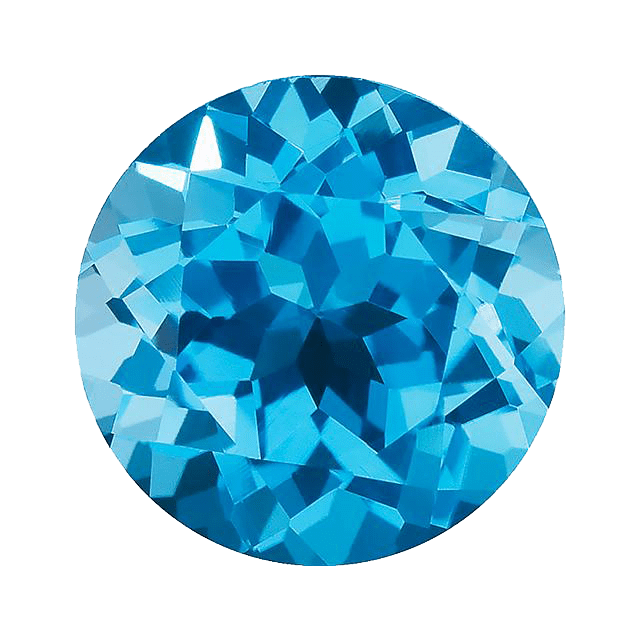 It is a fluorine aluminium silicate and comes in yellow, yellow-brown, honey-yellow, flax, brown, green, blue, light blue, red and pink … and sometimes it has no colour at all. The topaz. The topaz has been known for at least 2000 years and is one of the gemstones which form the foundations of the twelve gates to the Holy City of the New Jerusalem. It cannot be proved conclusively whether the name of the topaz comes from the Sanskrit or the Greek, though the Greek name ‘topazos’ means ‘green gemstone’. The colour in which the topaz is most commonly found is yellow. In mysticism, the topaz is attributed with a cooling, styptic and appetising effect. It is said to dispel sadness, anger and nocturnal fears, to warn its wearer of poisons and protect him or her from sudden death.[/caption]
It is a fluorine aluminium silicate and comes in yellow, yellow-brown, honey-yellow, flax, brown, green, blue, light blue, red and pink … and sometimes it has no colour at all. The topaz. The topaz has been known for at least 2000 years and is one of the gemstones which form the foundations of the twelve gates to the Holy City of the New Jerusalem. It cannot be proved conclusively whether the name of the topaz comes from the Sanskrit or the Greek, though the Greek name ‘topazos’ means ‘green gemstone’. The colour in which the topaz is most commonly found is yellow. In mysticism, the topaz is attributed with a cooling, styptic and appetising effect. It is said to dispel sadness, anger and nocturnal fears, to warn its wearer of poisons and protect him or her from sudden death.[/caption]
It is reputed to make men handsome and intelligent and sterile women fertile and happy. However, it is probably better not to rely too much on its magical powers, since it was also claimed that you could immerse your hand in boiling water after a topaz had been thrown into it and retract it again unharmed! It is the stone of the month November.

Smoky quartz is a brown transparent quartz that is sometimes used for unusual faceted cuts. This variety was sometimes known as smoky topaz in the past, though the term is incorrect and misleading. It ranges in clarity from almost complete transparency to a brownish-grey crystal that is almost opaque. Smoky quartz is a very protective and grounding stone. It brings physical and psychic protection. It is also an excellent stone for protection from negative energy, as It removes negativity and negative energy of any kind and transforms them to positive energy. It is also used in assisting in making wishes come true by grounding their essence in reality. Thus, it is a stone that brings abundance, prosperity, and good luck.
Smoky quartz is beneficial mentally in several ways. It fosters cooperation in groups and supports their efforts energetically. It engenders creativity by bringing the same energies of grounding the creative process in reality to bring imaginative efforts to fulfilment Smoky quartz also works energetically to assist in prioritizing needs and wants, and brings wisdom to everyday life
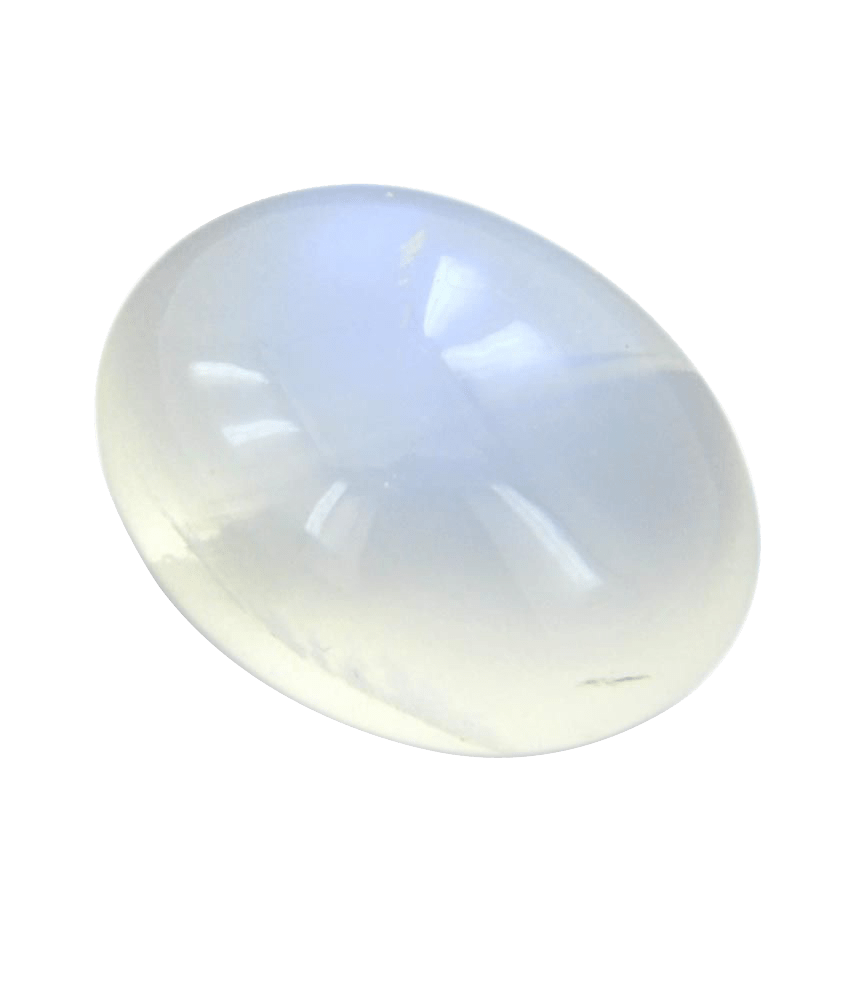
Moonstone is a variety of the feldspar-group mineral orthoclase. When light falls between these thin layers it is scattered producing the phenomenon called adularescence. Adularescence is the light that appears to billow across a gem. Other feldspar minerals can also show adularescence including labradorite and sanidine. Moonstone is a birthstone for June, along with pearl and alexandrite. According to Hindu mythology, moonstone is made of solidified moonbeams. Many other cultures also associate this gem with moonlight, and it’s easy to see why. Its internal structure scatters the light that strikes it, creating a phenomenon known as adularescence. Legends say that moonstone brings good luck. Many believed that you could see the future if you held a moonstone in your mouth during a full moon. Adularescent moonstone was once called “adularia.” The name originated with a city in Switzerland, Mt. Adular (now St. Gotthard), that was one of the first sources of fine-quality moonstone.
Since earliest times, Moonstone has been a tangible connection to the magic of the moon – an amulet of protection for travellers, a gift of lovers for passion, a channel for prophecy, and a path to wisdom. As it waxes and wanes in cyclic perfection, it creates the tides and rhythms of our mother, Earth, and influences our behaviours, emotions and spiritual growth. Moonstone calms and encourages, teaching us the natural rhythms of life.
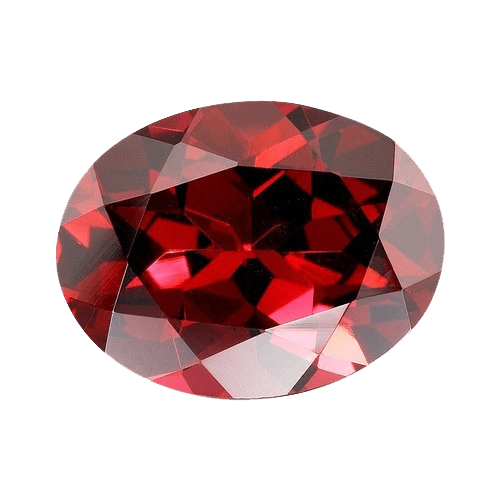 Aren’t garnets those wonderful deep-red gemstones you often find in antique jewellery? Well yes, to a certain extent, a deep, warm red indeed being the colour most frequently found in garnets. Thanks to their rich colour spectrum, garnets today can quite happily keep pace with changes of style and the colour trends of fashion. Garnets have been known to Man for thousands of years. Garnets are also found in jewellery from early Egyptian, Greek and Roman times. Today, science has taught us that the garnet’s proverbial luminosity comes from its high refractive index.
Anyone who loves what is pure and natural and the warm, sun-bathed colours of late summer will be fired with enthusiasm by the colour spectrum of the garnet. Today, garnets mostly come from African countries, but also from India, Russia and Central and South America. The skilled hands of cutters the world over work them into many classical shapes, but also increasingly into modern, imaginative designer cuts. Garnets remain convincing with their natural, unadulterated beauty, the variety of their colours and their tremendous brilliance.
Aren’t garnets those wonderful deep-red gemstones you often find in antique jewellery? Well yes, to a certain extent, a deep, warm red indeed being the colour most frequently found in garnets. Thanks to their rich colour spectrum, garnets today can quite happily keep pace with changes of style and the colour trends of fashion. Garnets have been known to Man for thousands of years. Garnets are also found in jewellery from early Egyptian, Greek and Roman times. Today, science has taught us that the garnet’s proverbial luminosity comes from its high refractive index.
Anyone who loves what is pure and natural and the warm, sun-bathed colours of late summer will be fired with enthusiasm by the colour spectrum of the garnet. Today, garnets mostly come from African countries, but also from India, Russia and Central and South America. The skilled hands of cutters the world over work them into many classical shapes, but also increasingly into modern, imaginative designer cuts. Garnets remain convincing with their natural, unadulterated beauty, the variety of their colours and their tremendous brilliance.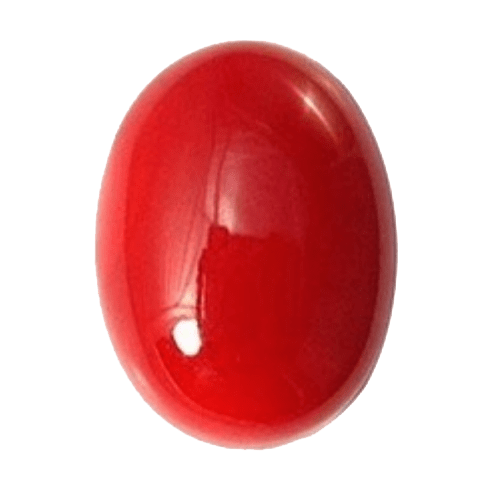
Corals are a decorative material with a very special fascination – the perfect embodiment of Man’s longing for summer, sun and far-off oceans. Corals live at depths of between three and 300 metres in the waters around Japan, Taiwan and in the Malaysian Archipelago, in the Red Sea, in the Bay of Biscay and around the Canary Islands, as well as in north-east Australia and the Midway Islands. In the Mediterranean, there are coral banks in the Tyrrhenian Sea, off the coast of Sardinia, off Tunisia and Algeria, former Yugoslavia and Turkey. Corals do not necessarily have to be red, even if red is thought of as their typical colour. Corals grow in Nature in a wide range of colours from red to white and from blue and brown to black. Black corals and gold corals are very much in fashion, whilst the blue ones are extremely rare. The white of the angel skin coral, suffused with pink, is regarded as particularly precious. Other well-known colours are the rich red Japanese Moro coral, the pale pink ‘Boke’ and the red ‘Sardegna’.[/caption]
Coral has been used for decorative purposes and esteemed as a protective stone since time immemorial. Even today, red corals are still worn as a talisman to protect the wearer against evil spirits in many cultures. Modern gemstone therapists too highly esteem its positive effects. Coral, it is said, relieves tension and fear and promotes positive forms of social life.
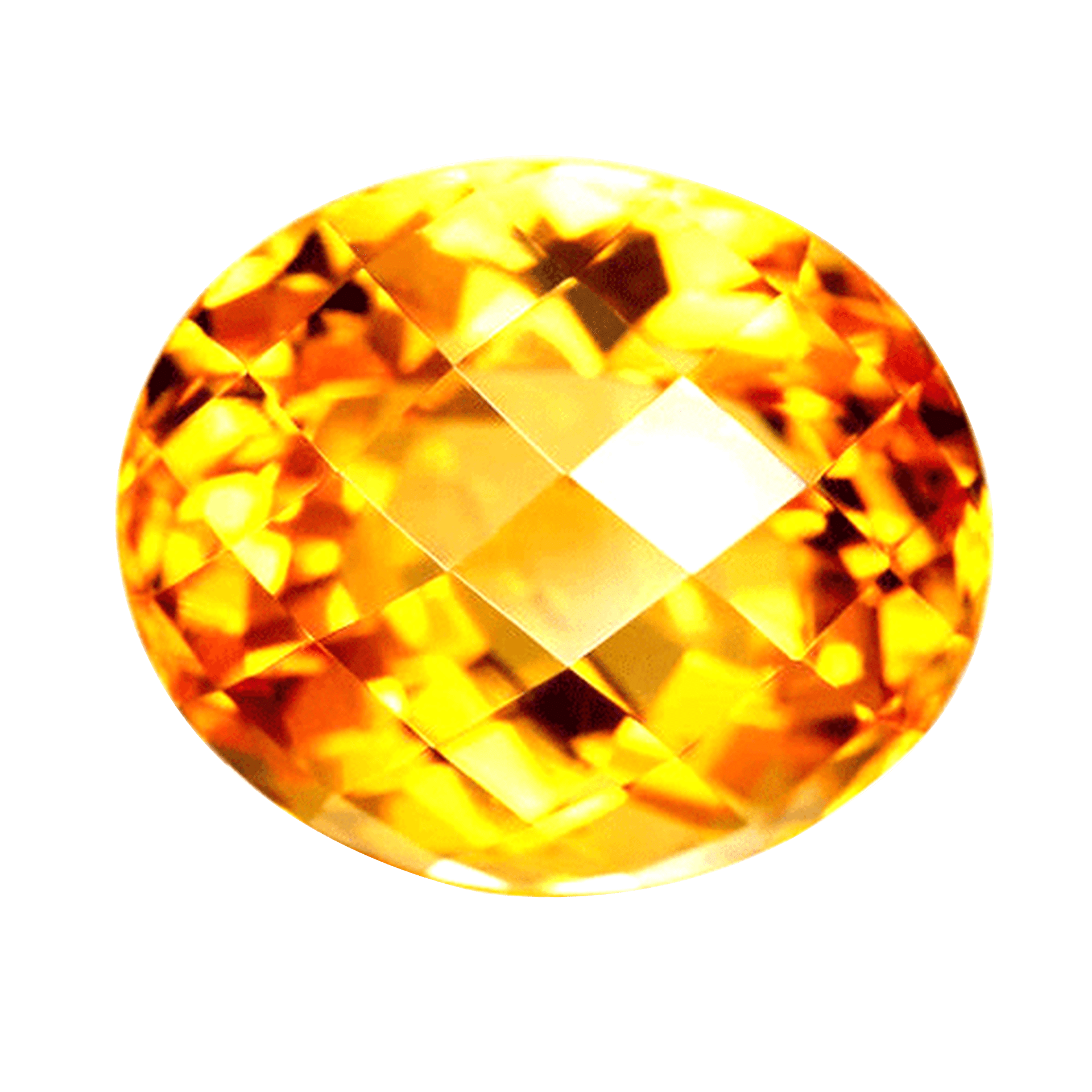
The stone for the month of November. Many people have come to know and love this stone under the name gold topaz, or Madeira or Spanish topaz. Thus the history of the citrine is closely interwoven with that of the topaz, and coincides with it completely when it comes to the interpretation of alleged miraculous powers. The name is derived from the colour – the yellow of the lemon – , although the most sought-after stones have a clear, radiant yellowish to brownish red. Like all crystal quartzes. In Europe, the boom on these yellow to reddish crystal quartzes didn’t begin until, in the 1930s, expatriate agate cutters from Idar-Oberstein sent large quantities of citrine back home, along with amethyst and agate, from Brazil and Uruguay. Thus the golden-yellow quartzes made a contribution to Idar-Oberstein’s becoming – and remaining – one of the world’s great gemstone centres. Just as they had been used to doing with agate and other kinds of quartz.
In the Empire style, the topaz was still widespread, but then the more reasonably priced citrine took over from it and even usurped its name. Since then, the topaz has been a rather exotic figure in the jewellery trade, and has been given the additional predicate ‘pure’ to make it clear that the topaz, not the quartz topaz, is meant. And it is still waiting for its comeback to this day.
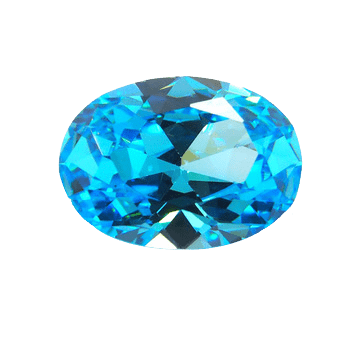 From the light blue of the sky to the deep blue of the sea, aquamarines shine over an extraordinarily beautiful range of mainly light blue colours. Aquamarine is a fascinatingly beautiful gemstone. Its light blue arouses feelings of sympathy, trust, harmony and friendship. Good feelings. Feelings which are based on mutuality and which prove their worth in lasting relationships. The blue of aquamarine is a divine, eternal colour, because it is the colour of the sky. However, aquamarine blue is also the colour of water with its life-giving force. And aquamarine really does seem to have captured the lucid blue of the oceans. Its name is derived from the Latin ‘aqua’ (water) and ‘mare’ (sea). It is said that its strengths are developed to their best advantage when it is placed in water which is bathed[/caption]
From the light blue of the sky to the deep blue of the sea, aquamarines shine over an extraordinarily beautiful range of mainly light blue colours. Aquamarine is a fascinatingly beautiful gemstone. Its light blue arouses feelings of sympathy, trust, harmony and friendship. Good feelings. Feelings which are based on mutuality and which prove their worth in lasting relationships. The blue of aquamarine is a divine, eternal colour, because it is the colour of the sky. However, aquamarine blue is also the colour of water with its life-giving force. And aquamarine really does seem to have captured the lucid blue of the oceans. Its name is derived from the Latin ‘aqua’ (water) and ‘mare’ (sea). It is said that its strengths are developed to their best advantage when it is placed in water which is bathed[/caption]
in Sunlight.
Aquamarine is one of our most popular and best-known gemstones, and distinguishes itself by many good qualities. It is almost as popular as the classics: ruby, sapphire and emerald. In fact it is related to the emerald, both belonging to the beryl family. There is hardly any other gemstone in modern jewellery design which is refined in such a variety of ways as aquamarine. In this way, each aquamarine becomes a unique specimen, whose magical attraction no woman can resist.
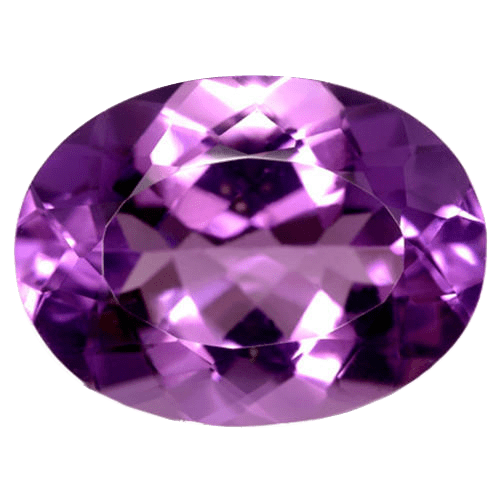 The amethyst is extravagance in violet. For many thousands of years, the most striking representative of the quartz family has been a jewel coveted by princes both ecclesiastical and secular. Moses described it as a symbol of the Spirit of God in the official robes of the High Priest of the Jews, and the Russian Empress Catherine the Great sent thousands of miners into the Urals to look for it. In popular belief, the amethyst offers protection against drunkenness – for the Greek words ‘amethystos’ mean ‘not intoxicated’ in translation. A more apt stone for the month of February, particularly if there is to be plenty going on in the way of carnival celebrations, could thus hardly be wished for. A large number of further miraculous powers are attributed to the amethyst in all sorts of cultures. It was said to protect crops against tempests and locusts, bring good fortune in war and in the hunt, drive out evil spirits and inspire the intellect. The South American deposits in particular, which were not discovered until the nineteenth century, brought down the price of the violet gemstone. Most of the material from Brazil is light-coloured, a tender purple. In Madagascar, it is generally red or violet hues which are found. Uruguay supplies the most beautiful and the deepest colour, but it is mostly blemished. Thus immaculate stones of the finest violet still fetch carat prices of well over a hundred euros. Mounted with diamond braid trimming, as has been the custom for some 100 years, enchanting pieces of jewellery are thus created. No wonder that people find it worth going to the trouble of producing imitations and synthetics.
The deposits with the greatest economic significance are in various states in southern Brazil and in neighbouring Uruguay. The third major export country is Madagascar. However, this gemstone is spread all over the world. In Tibet there were amethyst rosaries, for there the gemstone was dedicated to Buddha and was said to promote clarity of mind. In Sri Lanka, stones which have rolled down on their own are found in debris.
The amethyst is extravagance in violet. For many thousands of years, the most striking representative of the quartz family has been a jewel coveted by princes both ecclesiastical and secular. Moses described it as a symbol of the Spirit of God in the official robes of the High Priest of the Jews, and the Russian Empress Catherine the Great sent thousands of miners into the Urals to look for it. In popular belief, the amethyst offers protection against drunkenness – for the Greek words ‘amethystos’ mean ‘not intoxicated’ in translation. A more apt stone for the month of February, particularly if there is to be plenty going on in the way of carnival celebrations, could thus hardly be wished for. A large number of further miraculous powers are attributed to the amethyst in all sorts of cultures. It was said to protect crops against tempests and locusts, bring good fortune in war and in the hunt, drive out evil spirits and inspire the intellect. The South American deposits in particular, which were not discovered until the nineteenth century, brought down the price of the violet gemstone. Most of the material from Brazil is light-coloured, a tender purple. In Madagascar, it is generally red or violet hues which are found. Uruguay supplies the most beautiful and the deepest colour, but it is mostly blemished. Thus immaculate stones of the finest violet still fetch carat prices of well over a hundred euros. Mounted with diamond braid trimming, as has been the custom for some 100 years, enchanting pieces of jewellery are thus created. No wonder that people find it worth going to the trouble of producing imitations and synthetics.
The deposits with the greatest economic significance are in various states in southern Brazil and in neighbouring Uruguay. The third major export country is Madagascar. However, this gemstone is spread all over the world. In Tibet there were amethyst rosaries, for there the gemstone was dedicated to Buddha and was said to promote clarity of mind. In Sri Lanka, stones which have rolled down on their own are found in debris.
Tanzanite is an extraordinary gemstone. It occurs in only one place worldwide. Its blue, surrounded by a fine hint of purple, is a wonderful colour. It is named after the East African state of Tanzania, the only place in the world where it has been found. Tanzanite is a blue variety of the gemstone zoisite. The deep blue of the tanzanite is fantastic, and runs from ultramarine blue to light violet-blue. The most coveted colour is a blue surrounded by a delicate hint of purple, which has a particularly wonderful effect in sizes of over 10 carats. A tanzanite will continue to fascinate with its unusual, captivating aura. Its deep blue with the slightly purple tinge is one of the most extravagant colours known to Man. It personifies immaculate, yet unconventional elegance. A person who acquires one of these exclusive gems is someone who wishes to set himself apart from the hoi polloi. A person who wears it exudes confidence and individuality.
In the meantime, almost any price you care to name is being asked – and paid! – for tanzanites of good quality and large size. What makes this stone so popular? Is it simply that fantastic colour? No, it is also the exclusivity of its origin. The stone is particularly highly prized because it is found in only one place in the whole world.
Jewellery Care
How to care for your pearls
- Always apply cosmetics and perfumes before wearing your pearls.
- After wearing, clean pearls with a soft, damp cloth.
- For safety’s sake, it is advisable to have your pearls re-strung approximately once a year, depending on the frequency of wear.
- Do not store your pearls with other jewellery or hard objects, which might scratch the surface.
- Wear them!!! Wear them at least semi-often!! Pearls were originally born in the water and benefit immensely from absorbing the oils that your skin naturally secretes throughout the day. So go ahead, put them on and show them you care.
- Gently wipe pearls with a soft cloth to remove sweat, perfume, excess oils or dirt before putting them away.
- Pearls should be stored away from other objects or jewellery that may scratch their surfaces. Wrap the pearls in linen, soft cloth, or place in a soft pouch.
- Do NOT store pearls in an airtight package such as a plastic bag: remember, pearls need moisture. If the environment is too dry, the pearls may crack. If placing the pearls in a safety deposit box or in a hot environment, leave a damp cloth nearby, and try to get them out of there as quickly as you can.
- Keep pearls away from chlorine bleach, hydrogen peroxide, vinegar, ammonia, hairspray, perfume, and cosmetics, as these substances will damage the pearl surface.
- Make sure to put pearls on after finished spraying perfume or hairspray and putting on makeup. Be very careful with chemical substances as they will eat holes in the pearl nacre.
- Remove pearls before exercising to keep them away from perspiration.
- Do not submerge your pearls in water – no showers, no dishes, no swimming. The chlorine in the water will eat away at the epoxy securing the pearls to their mountings, and soaking the silk your pearls are strung on causes it to stretch out and break early.
- Avoid hanging the pearl necklace for on a hook for storage; this places un-necessary strain on the silk and stretches out the necklace.
- Restring pearls once every two to three years, or once a year if you wear them weekly. Be sure to have each pearl knotted separately, preferably with silk, so they do not rub together and wear on the pearl nacre. If pearls are very small, knots between each pearl may be undesirable.
Don’t store your diamond jewellery next to other jewellery pieces as this can cause scratches. A fabric-lined jewellery case with separate compartments is Ideal. You can also individually wrap jewellery in soft tissue paper or use jewellery pouches for each piece.
Regularly inspect your diamond jewellery to make sure the setting is secure. Promptly bring it to a professional jeweller if you notice any signs of damage or loosening of the prongs. It’s a good idea to have your diamond jewellery examined at least once a year by a professional jeweller. In addition to performing any necessary repair work, your jeweller can expertly clean your jewellery.
Everyday exposure to creams, skin oils, hairspray, household chemicals and other substances can cause build-up that will dull your diamond’s brilliance and sparkle. Use a solution of warm water mixed with a few drop of ammonia in which to soak your diamond jewellery. Gentle scrubbing with an old, soft-bristled toothbrush is useful for more extensive cleaning. Rinse and dry with a clean soft cloth.
THE BASICS OF KEEPING YOUR DIAMOND CLEAN
So how can you keep your diamond looking its very best? Here are some tips on diamond care:
Handle your diamond sparingly, as your fingers provide enough oil from your skin to alter the way your diamond looks.
Clean your diamond regularly. A simple plan to keep your diamond jewellery always looking beautiful is to soak the diamond in an ammonia-based household cleaner (such as window cleaner) overnight, once or twice weekly. In the morning, remove the diamond from the cleaner and brush it with a soft, clean toothbrush to remove any leftover dirt. Take extra care to brush the back of the diamond as this will be the area that has collected the most oil and dirt.
Be aware that fragile settings and estate jewellery won’t take kindly to being scrubbed with a toothbrush, so use a soft touch. Then, just rinse the diamond with water and wipe with a soft, lint-free cloth.
Don’t use harmful solutions. Chlorine or abrasives should never be used when cleaning diamonds, especially those set in jewellery. These erode some of the metals often used in diamond settings, and may loosen prongs, or even dissolve the metal completely.
Sometimes an ultrasonic cleaner is necessary to remove encrusted dirt on diamonds. By sending high frequency sound waves through a detergent solution, ultrasonic cleaners cause vibrating fluid to remove accumulated dirt and grime. However, they can also shake loose stones from their mounting, so this method shouldn’t be used on fragile settings, and is best undertaken by a professional jeweller.
Regular cleaning will keep your diamond jewellery in gleaming condition and ready to sparkle on that special occasion.
TIPS FOR GENERAL CARE
Even though you may wear your diamond engagement ring 24 hours a day, you should still give thought to its care.
Don’t wear it when you’re doing rough work or going to the gym. Even though a diamond is durable, it can be chipped by a hard blow.
Don’t let your diamond come in contact with a chlorine bleach when you’re doing household chores. It can damage and discolour the mounting.
Do see your jeweler at least once a year and have him check your ring and other precious pieces for loose prongs and wear of mountings. He’ll usually give them a professional “shine-up” too.
PUTTING DIAMONDS AWAY
When you’re not wearing diamonds and precious jewellery, they still require attention. Keep your precious pieces in a fabric-lined jewel case, or a box with compartments or dividers.
lf you prefer to use ordinary boxes, wrap each piece individually in tissue paper.
Don’t jumble your diamond pieces in a drawer or jewellery case, because diamonds can scratch other jewellery-and can even scratch each other.
Don’t leave your ring on the rim of a sink when you remove it to wash your hands. It can easily slip down the drain.
DAILY WEARING TIPS
If treated right, gold jewellery should last for years. Here are a few things to keep in mind on a regular basis while wearing gold jewellery:
- Gold is a soft metal: while gold has a shine and a lustre all its own, it’s also a soft metal. This makes is susceptible to dings, scratches, and dents. Be mindful of your gold rings, watches, and bracelets while you wear them and remove them while playing any high-contact sports.
- Chlorine is gold’s worst enemy: with repeated exposure, chlorine will weaken your gold jewellery’s structure and eventually lead to it breaking. Make sure to take your jewellery off before getting in a pool or spa.
- Cover or remove while cleaning: household cleaners with acids or abrasives will damage your jewellery’s finish. Be sure to use rubber gloves while cleaning (we recommend doing this anyway to protect your skin) or remove your jewellery altogether.
- Put your jewellery on last when getting ready: makeup, perfume, hairspray, and lotions can damage your gold. Be sure to put these things on before your jewellery to limit the exposure.
- Take jewellery off before bathing: wearing jewellery while you bathe can lead to a build-up of soap which will cause a film on your jewellery.
REGULAR CLEANING TIPS
When worn regularly, your gold jewellery is exposed to skin oils, perspiration, dust, makeup, and more. To keep its shine, you should clean your jewellery regularly with a solution of 10-parts warm water and 2-parts dish soap. A few extra tips:
- Soaking is the key: per Real Simple, you should soak your gold jewellery pieces for 3 hours and then scrub them gently with a very soft brush. Rinse under clean water and blot dry with a cloth.
- Bonus tip: for an extra shine, use a jewellery polishing cloth after this! Do not use a paper towel or tissue as these can scratch your jewellery.
- Clean with soap as needed: by all means, clean your jewellery at home; but, don’t overdo it! Only clean your jewellery as needed when it’s visibly dirty or gathering a patina.
- Other jeweller-approved cleaners: rubbing alcohol is great for cleaning and sanitizing, but stay away from bleach!
- Look out for damage: during your regular jewellery cleanings, be on the lookout for any damage or loose stones. Cleaning damaged pieces can only make the problem worse.
HOW TO STORE YOUR GOLD JEWELRY
After you’ve worn and cleaned your gold jewellery for the day, the next step in taking proper care of it is to store it properly.
- Use a jewellery box: a clean, dry, fabric-lined jewellery box is the best option.
- Wrap each piece in a soft cloth: If you don’t have a jewellery box, save those free phone screen clothes and use the extras to wrap each piece of your jewellery individually.
- Store pieces separately: this prevents jewellery from tangling or scratching each other.
SCHEDULE A YEARLY CLEANING
All the above tips are great ways for you to take care of your fine gold jewellery on a daily basis. However, doing those things alone is not enough. We recommend having your jewellery professionally cleaned every six-months and checked for loose prongs and damage annually.
Emerald Gemstone and Jewelry Care and Cleaning
Precious emerald is sensitive to pressure and vulnerable to household chemicals. Although emerald is one of the harder gemstones, it does still require careful handling, due to its naturally included and flawed formation. Extra care should be taken when handling emeralds as they are more fragile than other forms of beryl. Avoid wearing emerald jewellery when working with harsh chemicals or household cleaners, such as bleach or acid. When cleaning, you can use warm soapy water and a tissue or a soft cloth. Be sure to rinse the stones well to remove all soapy residue.
Avoid ultrasonic cleaners and steamers when cleaning your emeralds as these can remove the oils that are used to enhance the emeralds. Traditional oiling for emeralds is stable but not permanent, which means that most emeralds will need re-oiling every so often to return some of their lost colour and luster. Always remove any emerald jewellery before exercising, cleaning, playing sports or engaging in vigorous physical activities. Emeralds can easily scratch other gems, and they can easily be scratched by harder gems such as topaz and sapphires. To prevent scratches, store emeralds away from other gemstones and gemstone jewellery. Store your gemstones by wrapping them in soft cloth and placing them in a fabric-lined box.
 Ruby Gemstone Jewellery Care and Cleaning
Ruby Gemstone Jewellery Care and Cleaning
Rubies are tough and durable, so they do not require any special care. To clean your rubies, simply use warm soapy water and a soft cloth. Fracture-filled and diffusion-treated gemstones should only be cleaned with a damp cloth. Fracture-filled rubies can be easily damaged compared to routing-heat rubies; avoid chemical cleaners and acids (lemon juice can affect the colour of a filled ruby). Do not attempt to recut or repolish a filled ruby, and do not heat these types of rubies with jeweller’s torch when working on or repairing filled-ruby jewelry. As with most gemstones, ultrasonic cleaners and steamers are not recommended. Always remove any jewelry or gemstones before exercising, cleaning or engaging in harsh physical activities such as sport. Do not expose rubies to acid and store rubies away from other gemstones to avoid scratches. It is best to wrap gemstones in soft cloth or place them inside a fabric-lined jewelry box.
Care and cleaning
Corundum (gem family of ruby and sapphire) is the second hardest gem material in the world, second only to diamond. This means sapphire can only be scratched by another sapphire or a diamond. This also means that unlike other coloured gemstones, contact with dust, which contains high quantities of silica will not scratch a sapphire.
Safest and easiest way to clean sapphire is to wash it in warm soapy water and wipe it with a gem cleaning cloth. Once set in jewellery, use a soft paintbrush to clean through the setting. It is important clean the pavillion of the stone to maintain high brilliance.
STORING SAPPHIRE JEWELLERY
When storing loose gemstones or jewellery take a good care not to let them touch one another and that each piece is stored separately. As a hard gem material, sapphire can scratch softer gemstones, other sapphires or precious metal such as gold or platinum. And as diamonds are harder than sapphires, it can scratch sapphires.
Care Instructions: Gold Vermeil & Gold Plated
Gold vermeil is actually a thick coating on sterling silver. That brings up a new question about what sterling silver is. Sterling silver is the silver of 92.5% purity. Coming back to the point, gold vermeil pieces are required to have at least 120 millionths of an inch in thickness, with a minimum 10,000 fineness.
Gold vermeil rests in squarely in the midrange price point in the Gold market. Now that it may seem like a cheaper alternative to solid gold, one should still clean Gold vermeil regularly with utmost care.
Therefore, here is an article on how to clean gold vermeil in every possible way there is.
Using baking soda:
Mixing baking soda and water in equal parts into a paste. Then make enough so that the vermeil item can be covered. Start at first taking 1/4th of a cup of water and baking soda. Chemical substances are very harsh to vermeil such as soap. These should be avoided at all costs since they might result in discoloring the jewelry.
After covering the vermeil gently all over it with a clean cloth, the paste needs to be rinsed off with warm running water wiping it off with a soft clean cloth.
Keeping in an airtight container:
Yeah yeah. I know gold doesn’t get oxidized. But, as this is a gold vermeil item, it’d be very foolish of anyone to forget the sterling silver that is sleeping beneath the gold. The gold may not get oxidized ever but the silver might. Therefore, the best solution would be to always keep the vermeil dry and always to put the vermeil into an air-tight container.
Keeping from lotions and potions:
When you are really skin caring and taking all the possible skin cares there may well as be, you surely are using some lotions and potions to keep the moistures in there. But, this is something that may be really harsh to your vermeil jewelry. You may apply your lotions to your skin carefully away from the gold vermeil, but at a point of the day after partying really hard, the gold vermeil may slide to the lotions which may result into discoloring of the vermeil. Gold vermeils are always better kept away from chemical abrasives such as soap, shampoo, lotions, beauty creams etc.
Keeping from pools and other water activities:
Although it might seem like a pain in the back, a habit should be made to put off one’s vermeil jewelry right before any water activities especially before jumping into the pool. Pool water contains chlorine which is truly harsh to the vermeil gold and may result in making the pristine shine very dull.
Using soft clean cloth:
As gold vermeil has a thick layer of pure gold on the sterling silver, there can easily appear any sort of scratches. Thus, soft polishing clothes should be used while wiping the vermeil. And the pattern of up and down rubbing should be followed. Never rub in a circular motion as this might put bruises on the thick gold layer.
Contacting an expert:
We seek help from others for every little thing. For lazy people who might find cleaning the jewelry themselves a heck of work, can contact expert jewelers. While this might cost a few bucks, you are going to get a professional safe cleaning. And you might well as get some consulting from the expert on how you should take care your vermeil golds.
Using an ultrasonic cleaner:
We definitely own a vacuum cleaner to clean our house since we can’t reach every corner of the house ourselves with our own hand. Therefore, this gadget is considered the pinnacle of cleaning houses perfectly. Same goes for the jewelry. We can’t manually reach every corner of it as different vermeil jewelry are made in different shapes. And professional cleanings do cost a lot. So, ultrasonic jewelry cleaner comes to the rescue. With utilizing ultrasonic sound waves, this cleaner vibrates the jewelry up to 48 KHz and ends up cleaning all debris there is.
Therefore, while it may seem expensive to buy. But considering the professional cleaning it does and after using it for a while people definitely get its worth right. One can choose the best ultrasonic cleaners researching from some articles on the best ultrasonic cleaners.
Last words:
Gold vermeil is an affordable alternative of pure gold for the jewelry lovers. While there are a lot of other alternatives, Gold vermeil is one of the best. Gold vermeil is comparatively cheaper than the gold but still, it is expensive and it definitely looks as same. Therefore, the vermeil owner should always keep on mind about the limitations of gold vermeil and always try to follow the steps that we mentioned
in this article about “how to clean gold vermeil”.
How to Care for Platinum Jewelry
Remove platinum jewelry before using harsh chemicals such as bleach or abrasives, which may cause scratching or damage to gemstones.
Avoid gardening and heavy labor while wearing platinum jewelry.
Store your platinum in a separate compartment from other jewelry to avoid scratching.
Have platinum jewelry checked by a professional bi-annually or after being subjected to hard impact. This precaution ensures that any gemstones will remain secure in their setting.
When size alterations or repairs are necessary, make sure that your jeweler uses platinum stock to perform the work. Many bench technicians use white gold, which can cause dark markings along solder points.
Cleaning Platinum Jewelry
Clean regularly with jewelry cleaner specially formulated for gold and platinum jewelry or a solution of mild soap and warm water. Click here to see a jewelry cleaner that can be used on platinum.
Using a soft toothbrush, scrub the metal gently.
Rinse thoroughly under warm water, avoiding the sink drain.
Dry with a clean, lint-free cloth.
Do not soak or brush delicate gemstones that are mounted in your platinum jewelry such as opal, tanzanite, emerald or topaz. Check with your preferred jeweler for detailed gemstone care information.
Does Platinum Wear Down?
The attraction of platinum, aside from its sheer beauty, is that because of the metal’s dense molecular structure, very little volume is lost when platinum is scratched. Practically, platinum does not wear down.
Put in perspective, a platinum band fashioned twenty years ago and worn daily weighs virtually the same as it did when it was first made.


